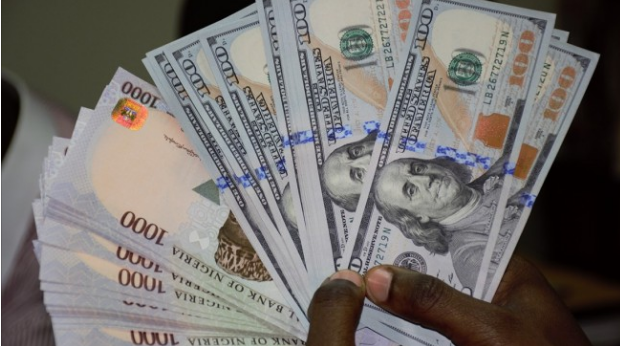Business
Naira Weakens At 505 To The Dollar

The Naira on Tuesday weakened against the dollar by 0.59 percent to close at N505/$ as against N502 traded since June 4, 2021, at the parallel market.
Nigeria currency’s depreciation was attributed to increased demand for dollars amid the shortage of the greenback.
Naira also lost 0.40 percent as the dollar closed at N500 on Tuesday from N498/$ since June 9, 2021, at the Bureau De Change (BDC) segment of the foreign exchange market.
At the Nigerian Autonomous Foreign Exchange (NAFEX), which is an official market, Naira also depreciated by 0.23 percent as the dollar was quoted at N411.75k on Tuesday compared to N410.80k quoted on Friday, data from the FMDQ indicated.
Currency traders who participated in the trading session on Tuesday maintained bids at between N400.00 and N420.97k per dollar.
The daily foreign exchange market turnover rose by 85.64 percent to $172.24 million on Tuesday from $92.78 million recorded on Friday.
The World Bank on Tuesday advised Nigeria to provide a clearer and more predictable foreign exchange management system.
The Central Bank of Nigeria has recently opted for a gradual weakening of the official rate of the naira in an apparent move to allow it to converge with the NAFEX rate, a market-determined rate for investors and exporters, Reuters reports.
At the money market on Tuesday, the Nigerian treasury bills secondary market closed on a flat note, with the average yield across the curve remaining unchanged at 6.36 percent.
Average yields across short-term and medium-term maturities closed flat at 4.00 percent and 5.56 percent, respectively.
However, the average yield across the Overnight (O/N) rate decreased by 7.77 percent to close at 15.17 percent as against the last close of 22.94 percent, and the Open Buy Back (OBB) rate decreased by 7.33 percent to close at 15.00 percent from 22.33 percent on the previous day.
Despite Open Market Operation (OMO repayment of N46.00 billion, the money market rates are expected to trend in double digits.
In the OMO bills market, the average yield across the curve increased by 4 bps to close at 9.68 percent as against the last close of 9.64 percent. Selling pressure was seen across long-term maturities with the average yield rising by 20 bps.
On the other hand, buying interest was witnessed across short-term and medium-term maturities with average yields falling by 14 bps and 8 bps, respectively.
Yields on 10 bills advanced with the 8-Mar-22 maturity bill recording the highest yield increase of 41 bps, while the yields on 12 bills compressed with the 17-Aug-21 maturity bill recording the highest yield decline of 22 bps.
Source: BusinessDay
Send Us A Press Statement Advertise With Us Contact Us
And For More Nigerian News Visit GWG.NG


